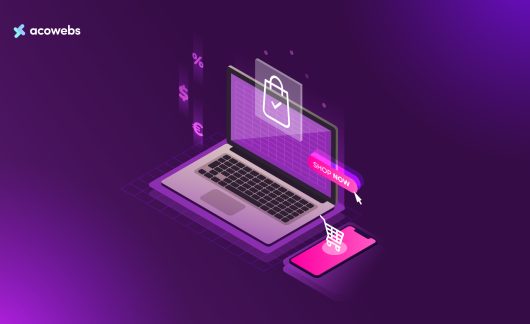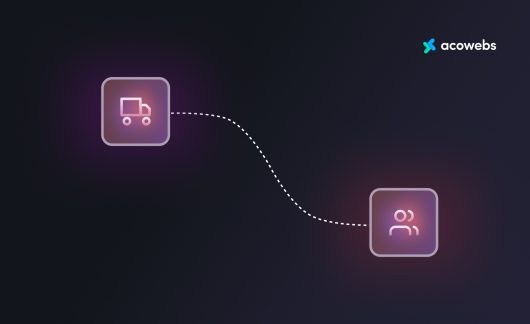Quick Commerce (also known as Q-commerce) is redefining convenience and speed in the constantly shifting environment of digital retail. Q-commerce emphasizes near-instant delivery and hyper-local service, taking online shopping to a new level.
While e-commerce has revolutionized online shopping by delivering a large choice of products with various delivery options, quick commerce goes one step further. With delivery guaranteed within minutes to several hours of order placement, this creative approach meets the increasing demand from customers for quick fulfillment.
Q-commerce relies on regional fulfillment centers and a robust logistics network to deliver its products within an aggressive timeframe, unlike traditional e-commerce which can take several days and serve a larger geographical area.
This overview is going to discuss the characteristics that make Q-commerce different and how it differs from conventional e-commerce.
What is Q-commerce?
As its name suggests, Q-commerce places a high value on speed, striving to deliver goods to customers one hour after they place an order. Usually, smaller, urgent purchases are the ones for whom this quick turnaround is appropriate, not weekly supermarket trips of greater size.
In actuality, Q-commerce serves customers who require quick restocking of goods—for example, a sudden scarcity of a daily meal component or an essential household item.
Such quick delivery is made possible by a well-oiled web of online ordering, nearby warehouses, and agile delivery crews that frequently utilize scooters or bicycles to get around city streets.
Q-commerce is not a completely new idea, despite the fact that it may appear so. A similar business model has long been used by the takeout food industry, which delivers meals fast in order to satisfy client demands.
As e-commerce companies started to cut delivery times more frequently, it was only a matter of time before other product categories benefited from this quick service as well, offering customers even more convenience.
Quick Commerce Changing Dynamics
Development in the Quick Commerce field is not anything new. The current health crisis just hastened this change in Q-commerce. Even before the pandemic, a PwC survey mentioned that 80% of American consumers agree that ease and convenience are their leading factors for an outstanding shopping experience.
They added that this is because they believe global shoppers want efficiency more than anything. Traditionally, busy lifestyles, smaller households, urbanization, and aging populations have driven speed and convenience in commerce, mostly through delivery services.
However, in the delivery services, the needs increased sharply under the heavy hand of the pandemic. During the COVID-19 pandemic, convenient commerce delivery became of more need with consumers less willing to visit the physical stores.
It affected consumer behavior, as recent data showed significant shifts in online grocery shopping trends. According to a 2023 study, 22% of US consumers now regularly use online grocery or delivery services.
Furthermore, the use of grocery delivery services in 2024 has risen by an impressive 56% compared to 2022 levels. This dramatic rise underpins the growing demand for rapid delivery solutions and highlights the changing dynamics in the quick commerce sector.
The last-mile grocery delivery market will grow from an estimated $25 billion in 2021 to as much as $72 billion in 2025. Having ridden this Q-commerce wave, brands are now harvesting the benefits of changing consumer behavior and putting themselves at the forefront for further success as demand for ever-faster and more convenient delivery solutions continues.
Using a platform like Gopuff or Instacart, which allows users to swiftly order a range of items from nearby stores or warehouses, time-sensitive requests can be met right away.
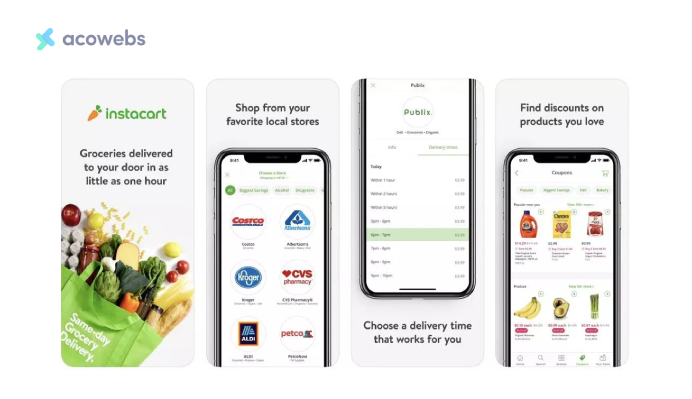
This convenience is particularly useful in cases of unanticipated events, such as running out of a component or unexpectedly needing supplies.
Quick Commerce Characteristics
Quick commerce, is seen as the next evolution in online retail, particularly for urban areas where consumers prioritize speed and convenience. Here are the key characteristics of q-commerce in detail:
1. Speed of Delivery
Where traditional e-commerce companies might have delivery windows that go from hours to even days, such q-commerce providers promise delivery in as few as 10-60 minutes from the time an order has been placed.
This speed is achieved through the use of a network of low-cost, strategically located warehouses, often referred to as micro-fulfillment centers (MFCs}or “dark stores”.
These MFCs are small warehouses, established very close to cities, with high efficiency. While being in a location near a high-density customer area, these dark stores are able to quickly and efficiently fill orders.
They are stocked with a carefully selected range of high-demand products so that items customers most frequently need are always on hand and ready to dispatch.
A more locally oriented strategy for stocking will not only accelerate the speed of order fulfillment but also the delivery system, hence enabling q-commerce companies to hit their ambitious speed targets and provide a better customer experience.
Q-commerce is best represented by DoorDash’s rapid delivery model, in which food, grocery, and everyday needs are often delivered within a short span of time. Now, part of the ability to attain such high speed has been fulfilled by working with strategically located micro-fulfillment centers.
They are essentially small warehouses, pre-stocked with high-demand products and situated near urban areas. This proximity makes it easier and more effective for DoorDash to pick and dispatch orders with efficiency and dramatically shortens delivery time compared with traditional e-commerce models.
Since it was founded, DoorDash has grown at a rate that has put the company at over 30,000 drivers in 300 cities within just three years. Drivers are equipped with an iPhone, pre-loaded with the DoorDash app; the onboarding is similarly quick—less than 24 hours from signup to active delivery.
It charges customers between $3 and $8 in delivery fees, then takes a 20% commission from restaurants on orders. This structure makes sure that DoorDash can deliver on the promise of speed and efficiency at the core of its business model, further solidifying its lead in q-commerce.
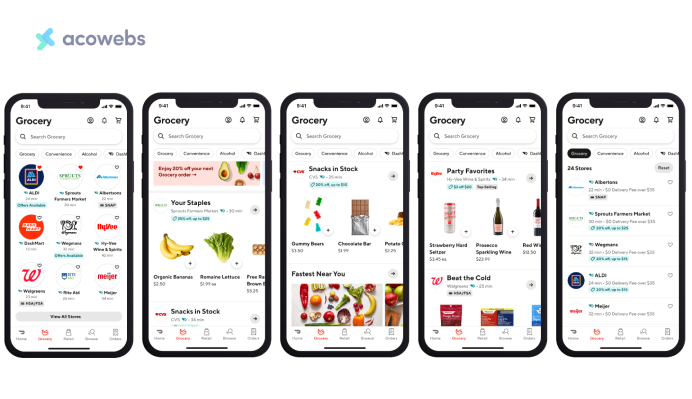
2. Limited Product Range
The q-commerce model intentionally limits the range of products compared with the full array of goods available through conventional e-commerce. In the case of q-commerce, concentration is held on a core set of important goods only, basically groceries, household requirements, personal care products, and over-the-counter pharmaceuticals.
This narrower assortment caters to urgent needs by letting consumers get critical items on very short notice. Q-commerce companies understand the needs and preferences of the local population and really do make sure to have on stock relevant and efficient inventories.
Items that are largely demanded and ordered quickly are kept in stock by such platforms by analyzing popularity, necessity, and turnover rate. This targeted approach keeps up the stock level and greatly enhances the speed and reliability of order fulfillment, aligning with the rapid service promise of q-commerce.
3. Technological Integration
In q-commerce, integration with technology holds the key to sustaining efficiency in delivering orders quickly. One such factor is real-time inventory management.
Advanced inventory management systems are required to be implemented by the q-commerce platforms so that stock levels can get updated as frequently as possible.
Real-time visibility into the levels of inventory allows the prevention of stock-outs because the inventory data is always up-to-date; this confirms the fulfillment of orders and minimizes the chances of customers getting out-of-stock situations.
Moreover, AI and data analytics also play their parts in finessing q-commerce operations. AI algorithms, paired with data analytics tools, help companies project demand more effectively so that the stock levels of popular items do not run out. These technologies also optimize routes and reduce delivery time, generally improving efficiency.
AI and data analytics can be very instrumental in personalizing shopping experiences, where analysis is done based on customers’ preferences and behaviors to help in tailoring recommendations for dynamic pricing and promotion management.
This kind of technological synergy will help smoothen operations, improve customer satisfaction, and increase operational efficiency in the fast-paced q-commerce landscape.
Instacart is a case of centralization of technology in q-commerce, with its end-to-end systems for real-time inventory management and AI-driven analytics. The company runs very efficient inventory management tools.
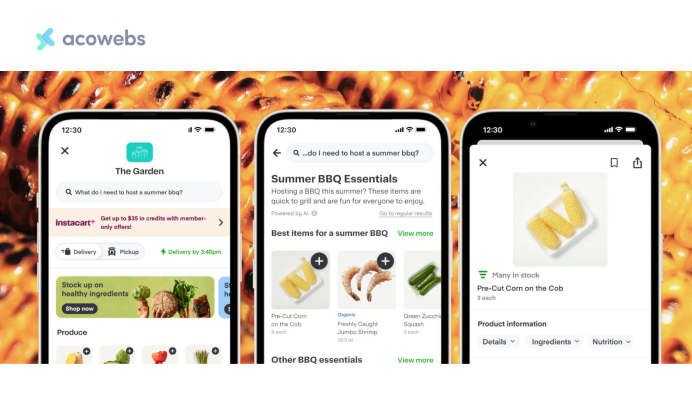
This is to ensure the stock levels within its extensive network of partner grocery stores are kept updated in real-time, minimizing the risk of items being out of stock. Further, Instacart deploys machine learning algorithms to predict customer demand and optimize inventory distribution so that high-demand products are always available.
Besides, it integrates natural language processing that enables advanced search and recommendation capabilities, facilitating personalized product recommendations in line with individual shopping preferences and habits.
All these technologies combined allow Instacart to drive operational efficiency, reduce delivery times, and create a richer customer experience.
4. Small Order Sizes
Small order sizes are a basic characteristic that defines q-commerce, rather different from classic e-commerce models.
In contrast to traditional e-commerce, where customers have mostly been making bigger and less frequent orders, in q-commerce, orders are made up of a pattern of small and frequent purchases.
The model answers the demand of consumers for instant satisfaction and the necessity of quick last-minute acquisitions. q-Commerce allows customers to make small orders—be it for a grocery run, a quick fix for a snack, or an urgent household supply—with the expectation of delivery at breakneck speed.
Hence, the average order value in q-commerce is relatively low compared to traditional e-commerce. Indeed, such orders are small and urgent by nature, leading to a lower basket size.
High frequency, however, offsets the lower average order value to some extent. In other words, while there are large volumes of small orders in q-commerce, it realizes considerable revenue to sustain operational efficiency in effectively meeting the immediate needs of customers.
5. Localized Operations
Q-commerce is based on robust localized operations; this forms the crux of its rapid delivery promise. This model is high in being hyperlocal, focusing on specific neighborhoods or districts within a city.
This kind of focus on the local level can be maintained as these q-commerce companies keep the delivery time low by serving a small and well-defined area. It also helps them to give their offers and services with respect to the local market requirements or preferences, enhancing efficiency and customer satisfaction.
Other than areas of focus, often q-commerce platforms partner with local businesses that involve small grocery stores or pharmacies. Local partnerships allow for more efficient order fulfillment by sourcing the products directly from nearby retailers. The model that keeps local businesses going also optimizes the supply chain.
This will ensure popular and more essential goods are much more available and quicker to deliver. Integrate with the local community and its resources, and q-commerce companies can better satisfy the immediate needs of their customers without giving away too much in service.
6. Cost Structure
The cost structure of q-commerce reflects the premium associated with its rapid delivery services. To some extent, due to the convenience and speed, q-commerce companies charge their customers higher prices compared to traditional retailing.
This premium comes in the form of increased delivery fees, higher prices of goods, and subscription models that allow access to expedited services. These higher costs help cover the expenses of maintaining the infrastructure and technology required for swift delivery.
Even at higher costs to the consumer, the q-commerce companies strive to drive operational efficiency to balance their financials. Some of the ways through which this is achieved are transaction volumes that are very high and spread fixed costs over a large number of orders.
Other major drivers for achieving efficiency are lean logistics and professional technology. This is how q-commerce platforms optimize the delivery routes, manage inventories, and make use of automated systems that bring down operational costs, only to ensure that their rapid service becomes both sustainable and profitable.
How Q-Commerce Differs From E-Commerce
Quick commerce and electronic commerce are both forms of online shopping, but they differ in terms of speed, convenience, and the types of products they typically offer. Let’s look at that.
1. Speed of Delivery
Q-commerce is ultra-fast delivery in 10-60 minutes. Fast service catering to immediate needs and last-minute purchases, assured quickly.
Traditional e-commerce features a longer window of delivery, where it takes a few hours to a few days. This model accommodates a broad range of products with differing delivery times based on the nature of the item and the shipping option chosen.
2. Product Range
Products in q-commerce are very few and curated; this comprises high-demand products like groceries, house essentials, and personal care products. The approach here is driven by the urgent needs and the local tastes of consumers.
Traditional e-commerce, on the other hand, offers an extensive array of products across numerous categories, from electronics to apparel. This huge range is not limited by the immediacy of consumer needs.
One of the classical examples of a traditional e-commerce company making its way towards becoming a q-commerce company is Amazon. Having already delved into a vast range of products across standard e-commerce, Amazon has ventured into the q-commerce marketplace with services like Amazon Fresh and Prime Now.
These services focus on groceries and household essentials delivered within a few hours of ordering. Amazon Fresh offers a thoughtfully curated selection of high-demand grocery items, from fresh produce to dairy and pantry staples, that align with the urgent needs-focused model of q-commerce.
Similarly, Prime Now, which originally offered same-day delivery for a broad range of products, has increasingly emphasized rapid delivery of essentials and daily necessities, reflecting a shift towards the q-commerce approach.
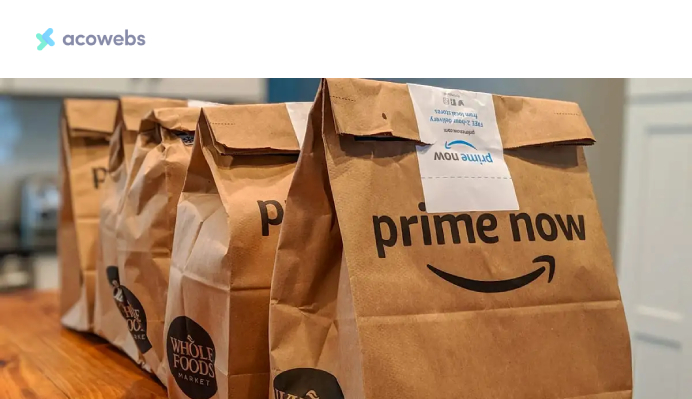
Through the application of q-commerce concepts, Amazon bridges the gap between traditional e-commerce and quick, localized fulfillment by utilizing its vast infrastructure and technological capabilities to supply necessities ultra-fast.
3. Operational Model
For the quick delivery that q-commerce wants to attain, micro-fulfillment centers or “dark stores” are important in locating themselves near urban areas. In the model, inventory management in real-time and efficient logistics enable it to keep pace with rapid service.
Traditional e-commerce is characterized by larger warehouses or distribution centers probably farther away from urban centers, dealing with a wide range of products, and dealing with longer delivery times.
4. Technological Integration
Traditional e-commerce is less dependent on advanced technologies compared to q-commerce.
Advanced technologies in AI and data analytics are important for real-time inventory management, demand forecasting, and route optimization—these are the mainstays in terms of maintaining the speed and efficiency of service in q-commerce.
Traditional e-commerce also makes use of technology for inventory management and order processing, but the need for real-time updates and emphasis on speed is not strongly felt.
Conclusion
Quick Commerce is the key evolution of online retail landscapes enshrined with a focus on ultrafast delivery and hyperlocal services.
Q-commerce, unlike e-commerce, offers a wide range of products with the ability to wait several hours, even days. It is based on the approach of speedy delivery of high-demand essential items within minutes to hours. This approach caters to urgent consumer needs and is executed through strategically located micro-fulfillment centers to assure efficiency and speed.
While traditional e-commerce serves a wider range of products and operates with longer delivery times, q-commerce would want to meet the growing consumer demand for immediacy and convenience.
Q-commerce will play a very prominent role in the retail future of any business as long as demand for fast and localized delivery solutions rises, driven by technological advancement and changing consumer expectations.
Acowebs are the developers of WooCommerce Dynamic Pricing the best way to add discounts based on a range of unconditional and considerable criterias to set with a sophisticated user interface which makes your efforts much easier. discount rules for woocommerce also comes with Percentage / Fixed price discounts.












 Login
Login
 Cart
Cart






